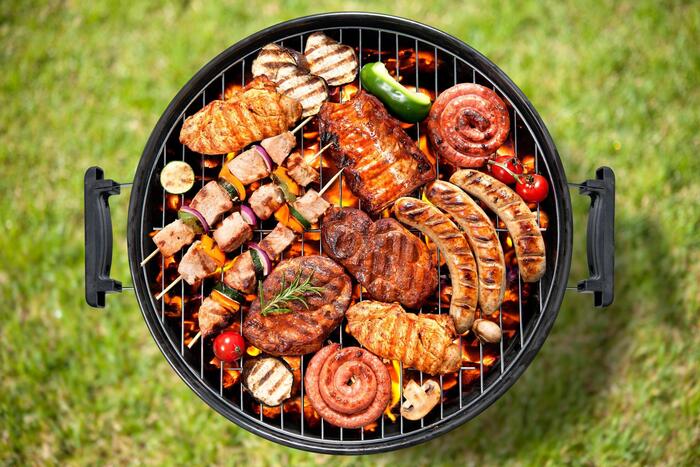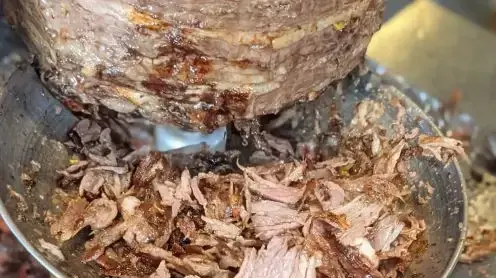In the fifties of the last century, a Roman necropolis was found in the center of Barcelona with numerous burials.
The site, called Plaza de la Villa de Madrid, was excavated again between 2000 and 2003, when a collective funerary complex of about 8.85 by 5 meters was located, which was interpreted as a
collegium funerarticium
;
that is, a mortuary structure belonging to a private or professional association of free people or slaves with little purchasing power.
These, by paying a monthly fee while alive, ensured a decent burial in the place.
The problem arose when the relatives had to carry out the obligatory ritual banquets in front of the tombs: not everyone could celebrate it as tradition dictated.
A tomb is only legally a tomb when a pig is sacrificed, authors such as Pliny, Tacitus, Cicero or Petronius have written.
More information
Archaeologists find in Tarragona a fortified Iberian city of 4.5 hectares
The 66 located burials (59 burials and 7 cremations) correspond to the first half of the 2nd century and the middle of the 3rd century.
Inside, in addition to human remains, in some cases animals have also been found, which confirms that the funerary rituals – banquets and offerings – required by law were carried out.
A hole was made in the graves through which food and drink were introduced.
In the study
Food for the soul and food for the body.
Studying dietary patterns and funerary meals in the Western Roman Empire: An anthropological and archaeozoological approach
(Food for the soul and food for the body. Studying eating patterns and funerary agapes in the Western Roman Empire), recently published on the professional platform
Plos One
, by Domingo Carlos Salazar-García, Lídia Colominas and Xabier Jordana, from the Universidad of Valencia, the Institut Català d'Arqueologia Clàssica, the University of Vic and the University of Cape Town (South Africa), it is explained that "the age, sex, offerings and diet of the buried individuals show some differences, which which suggests that the inequalities present in life could also have persisted in funerary rituals”.
The authors recall that "the afterlife in Roman religion was the milestone that had to be reached after death by fulfilling various funerary rituals."
Part of them consisted of offerings, banquets and animal sacrifices, made to ensure the protection of the deities and the memory of the deceased.
Written sources “show that only when a pig was sacrificed was a grave legally a grave.
And they also indicate that on the same day of the burial a funerary banquet was celebrated in the tomb in honor of the dead and food offerings were left.
It was also eaten in front of the burial on the ninth day after the funeral, on the birthdays of the deceased or on annual festivities.
"It is widely documented that the graves, whether for burial or cremation, contained holes or pipes through which food and drink could be poured directly onto the burial," the specialists explain.
This type of tube to
feed
the deceased has also been found in the Roman sites of Colchester (United Kingdom), Saint-Cyr-sur-Mer (France), Ostia (Italy), Tipasa (Mauritaina) and Carmona (Spain).
In Nimes (France), Pergolo (Italy), London (United Kingdom and Valentia (Spain), in addition to the remains of the banquets, archaeologists unearthed offerings, ceramics and plants inside the tombs.
The remains found in Vila de Madrid have been subjected to carbon and nitrogen isotope analysis to determine the diet of the buried individuals and to be able to contrast it with the remains of the animals consumed during the funerary banquet.
“Archaeological remains can retain stable isotope ratios present during life and thus provide information about the foods an individual consumed.
Bones and teeth have specific ratios of stable isotopes that reflect their biological-chemical origin and formation.
Plan of the Vila de Madrid necropolis in Barcelona. Collection of ancient excavations-MHCB
To carry out the study, in addition to the human remains, faunal remains were selected from the offerings and the waste from the banquets: that is, the bones that presented fractures, butchery marks and thermal alterations.
Thus, of the 4,882 bones, only 342 were chosen. The analysis determined that 30% were pigs, 27.1% bovines, 24.3% goats and 10% chickens.
Remains of roe deer (1.4%), hare (1.4%), rabbit (1.4%) and fox (4.3%) were also documented.
In total, 16 pigs, 13 cattle, 9 goats and 5 chickens.
The most frequent bones correspond to scapulae, humeri, radii, ulnae, pelvis, femurs and tibiae, which suggests that the parts richest in meat were consumed, although they came from old animals in order to reduce the costs of the banquets.
"This is an important point,
Women and men did not eat the same protein sources: it seems that some men ate more meat.
"This could mean that sociocultural tastes for food were different between the sexes, or that more males than females had access to protein-rich resources perhaps due to custom, social status, wealth, or medical advice."
The Roman doctors advised "eating different types of food depending on the humors".
Men, they thought, were "hot and dry", so they should eat "cold and wet food", such as fish.
Women, on the other hand, were "cold and wet", so they had to take them "hot and dry, for example cereals".
In short, the study reveals that, “although the offerings and banquets were stipulated by law, not everyone could afford to make sumptuous or rich offerings.
The presence of bird remains and portions rich in meat suggest that the relatives of the deceased tried to follow the law as much as possible”, because, “yes, the rich did not eat the same as the poor”.
Not the deceased.
50% off
Subscribe to continue reading
read without limits
Keep reading
I'm already a subscriber









